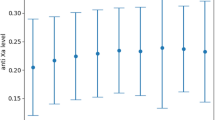Abstract
We report a case of intracranial thrombosis (IT) after ventriculoperitoneal shunting (VPS). We reviewed the literature to highlight the importance of considering the possibility of cerebral venous thrombosis following VPS, even though it is a rarely reported complication. A 14-year-old boy underwent distal catheter replacement due to its short size that was detected during a routine consultation. Five days postoperatively, he experienced nausea, vomiting, seizures, and headache. Although a diagnosis of meningitis was considered, diagnosis of IT was eventually confirmed through computed tomography venography and gadolinium magnetic angioresonance. The patient subsequently underwent anticoagulant therapy, which led to complete resolution of symptoms. In this report, we suggest a possible association between VPS and IT, which is a complication that is not commonly reported. The literature suggests that decreased blood flow due to over-drainage of CSF after VPS causes decreased head pressure, culminating in venous stasis and consequent thrombosis. In addition, the literature describes associations between IT and lumbar puncture (LP); therefore, it is important to consider the possibility of IT following these procedures.




Similar content being viewed by others
References
Farb R, Rovira A (2020) Hydrocephalus and CSF Disorders. In: Hodler J, Kubik-Huch RA, von Schulthess GK (eds) Diseases of the Brain, Head and Neck, Spine 2020–2023: Diagnostic Imaging. IDKD Springer Series. Cham (CH), pp 11–24. https://doi.org/10.1007/978-3-030-38490-6_2
Koleva M, De Jesus O (2021) Hydrocephalus. In: StatPearls [Internet]. Treasure Island (FL): StatPearls Publishing; 2021 Jan-. Available from: https://www.ncbi.nlm.nih.gov/books/NBK560875/
Kahle KT, Kulkarni AV, Limbrick DD Jr, Warf BC (2016) Hydrocephalus in children. Lancet 387:788–799. https://doi.org/10.1016/S0140-6736(15)60694-8
Tully HM, Dobyns WB (2014) Infantile hydrocephalus: a review of epidemiology, classification and causes. Eur J Med Genet 57:359–368. https://doi.org/10.1016/j.ejmg.2014.06.002
Matsubara T, Ayuzawa S, Aoki T, Ikeda G, Shiigai M, Matsumura A (2014) Cerebral venous thrombosis after ventriculoperitoneal shunting: a case report. Neurol Med Chir (Tokyo) 54:554–557. https://doi.org/10.2176/nmc.cr2012-0312
Fowler JB, De Jesus O, Mesfin FB (2021) Ventriculoperitoneal Shunt In: StatPearls [Internet]. Treasure Island (FL): StatPearls Publishing; 2021 Jan–. PMID: 29083724.
Misaki K, Uchiyama N, Hayashi Y, Hamada J (2010) Intracerebral hemorrhage secondary to ventriculoperitoneal shunt insertion–four case reports. Neurol Med Chir (Tokyo) 50:76–79. https://doi.org/10.2176/nmc.50.76
Petrov D, Uohara MY, Ichord R, Ali Z, Jastrzab L, Lang SS, Billinghurst L (2017) Pediatric cerebral sinovenous thrombosis following cranial surgery. Childs Nerv Syst 33:491–497. https://doi.org/10.1007/s00381-016-3329-2
Watanabe J, Okamoto K, Ohashi T, Natsumeda M, Hasegawa H, Oishi M, Miyatake S, Matsumoto N, Fujii Y (2019) Malignant hyperthermia and cerebral venous sinus thrombosis after ventriculoperitoneal shunt in infant with schizencephaly and COL4A1 mutation. World Neurosurg 127:446–450. https://doi.org/10.1016/j.wneu.2019.04.156
Son WS, Park J (2010) Cerebral venous thrombosis complicated by hemorrhagic infarction secondary to ventriculoperitoneal shunting. J Korean Neurosurg Soc 48:357–359. https://doi.org/10.3340/jkns.2010.48.4.357
Trapani S, Stivala M, Lasagni D, Rosati A, Indolfi G (2020) Otogenic lateral sinovenous thrombosis in children: a case series from a single centre and narrative review. J Stroke Cerebrovasc Dis 29:105184. https://doi.org/10.1016/j.jstrokecerebrovasdis.2020.105184
Hanigan WC, Fraser K, Tarantino M, Wang H (2005) Tumefaction of the dural sinuses associated with a coagulopathy following treatment of hydrocephalus in a perinate: case report. J Neurosurg 102:426–430. https://doi.org/10.3171/ped.2005.102.4.0426
Garg A, Rajendram P, Muccilli A, Noel de Tilly L, Micieli JA (2020) Dural venous sinus thrombosis after lumbar puncture in a patient with idiopathic intracranial hypertension. Eur J Ophthalmol:1120672120970406. https://doi.org/10.1177/1120672120970406
Mouraux A, Gille M, Dorban S, Peeters A (2002) Cortical venous thrombosis after lumbar puncture. J Neurol 249:1313–1315. https://doi.org/10.1007/s00415-002-0767-4
Ergan M, Bünau FHV, Courtheoux P, Viader F, Prouzeau S, Marcelli C (1997) Thrombose veineuse cerébrale après injection intra-thécale de glucocorticoids. Rev Rhum 64:595–598
Wilder-Smith E, Kothbauer-Margreiter I, Lammle B, Sturzenegger M, Ozdoba C, Hauser SP (1997) Dural puncture and activated protein C resistance: risk factors for cerebral venous sinus thrombosis. J Neurol Neurosurg Psychiatry 63:351–356. https://doi.org/10.1136/jnnp.63.3.351
Aidi S, Chaunu MP, Biousse V, Bousser MG (1999) Changing pattern of headache pointing to cerebral venous thrombosis after lumbar puncture and intravenous high-dose corticosteroids. Headache 39:559–564. https://doi.org/10.1046/j.1526-4610.1999.3908559.x
Browd SR, Gottfried ON, Ragel BT, Kestle JR (2006) Failure of cerebrospinal fluid shunts: part II: overdrainage, loculation, and abdominal complications. Pediatr Neurol 34:171–176. https://doi.org/10.1016/j.pediatrneurol.2005.05.021
Author information
Authors and Affiliations
Contributions
Nayara Matos Pereira and Paulo Ronaldo Jubé Ribeiro supervised the writing of this work. Nayara Matos Pereira was also responsible for reviewing medical records and gathering the exam results. Luiz Alves Vieira Netto, Luís Felipe Araújo Peres, Alice Jardim Zaccariotti, and Lígia Gonsalves Ribeiro did a literature review and wrote the paper. All the authors discussed the case and contributed to the final report of the case.
Corresponding author
Ethics declarations
Conflict of interest
The authors declare no competing interests.
Additional information
Publisher's Note
Springer Nature remains neutral with regard to jurisdictional claims in published maps and institutional affiliations.
Rights and permissions
About this article
Cite this article
Pereira, N.M., Vieira Netto, L.A., Peres, L.F.A. et al. Intracranial thrombosis after ventriculoperitoneal shunting. Childs Nerv Syst 38, 1205–1208 (2022). https://doi.org/10.1007/s00381-021-05319-0
Received:
Accepted:
Published:
Issue Date:
DOI: https://doi.org/10.1007/s00381-021-05319-0




